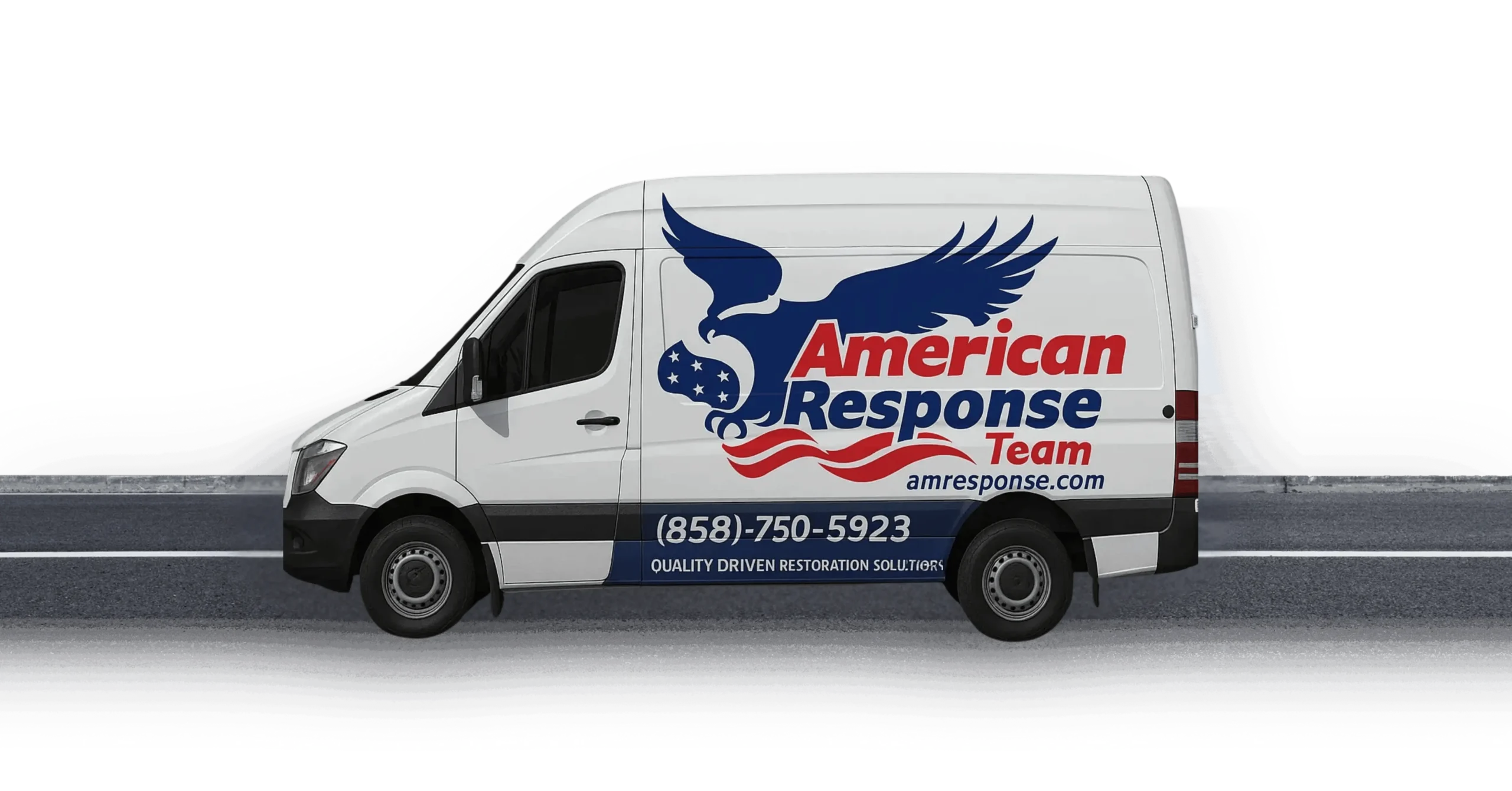Dealing with fire damage can feel overwhelming, especially when you’re wondering how to clean walls after fire damage safely. Whether you experienced a small kitchen fire or smoke damage from a nearby wildfire, cleaning soot and smoke residue from your walls requires the right approach and safety measures. This comprehensive guide will walk you through the essential steps for how to clean walls after fire damage while keeping you and your family safe throughout the process.
Why Proper Wall Cleaning After Fire Damage Matters
Understanding how to clean walls after fire damage properly is crucial for several important reasons. Fire and smoke leave behind more than just visible soot stains. The residue contains toxic particles that can harm your health if not removed correctly. According to the American Red Cross, soot is acidic and can cause permanent damage to surfaces if not cleaned immediately.
Fire damage also affects indoor air quality long after the flames are extinguished. Carbon particles from smoke settle on cooler surfaces and can continue releasing harmful chemicals into your home’s air. This is why learning how to clean walls after fire damage thoroughly is essential for protecting your family’s health and preserving your home’s value.
Safety First: Essential Precautions Before You Start
Before learning the specific steps for how to clean walls after fire damage, you must prioritize safety. Cal/OSHA guidelines emphasize that fire cleanup work involves exposure to hazardous substances including arsenic, cadmium, and lead.
Always wear proper protective equipment when cleaning fire damage. This includes rubber gloves, safety glasses, an N95 respirator mask, long-sleeved shirts, and long pants. LA County Public Health recommends avoiding skin contact with ash and soot, as these materials can contain dangerous particles.
Ventilation is critical when figuring out how to clean walls after fire damage. Open all windows and doors to create airflow that removes toxic particles from your home. Turn off your HVAC system to prevent spreading soot to unaffected areas. If you experience coughing, wheezing, or eye irritation while cleaning, stop immediately and get fresh air.
Assessing the Damage: What to Look For
Proper assessment is the first technical step in how to clean walls after fire damage. Walk through your entire home and document all areas showing signs of smoke and soot damage. Take photographs for insurance purposes before starting any cleanup work.
Look for obvious soot buildup, discoloration, and lingering smoke odors. Even walls that don’t appear visibly damaged may need cleaning. Smoke particles are microscopic and can settle on surfaces without leaving visible traces. Industry research shows that toxic smoke particulates are often invisible and odorless.
Pay special attention to areas around vents, corners, and behind furniture where soot tends to accumulate. Check both interior and exterior walls, as smoke can travel through your home’s structure and affect multiple rooms. Understanding the extent of damage helps you plan the most effective approach for how to clean walls after fire damage throughout your property.
Essential Supplies for Cleaning Fire Damage
Gathering the right supplies is crucial for learning how to clean walls after fire damage effectively. You’ll need chemical dry cleaning sponges, which are specifically designed for soot removal. These special sponges work differently than regular kitchen sponges and won’t spread soot around your walls.
For wet cleaning phases of how to clean walls after fire damage, prepare a solution using mild dish soap and warm water. Some professionals recommend mixing 4-6 tablespoons of tri-sodium phosphate with one cup of household cleaner per gallon of warm water, though this should be used with extreme caution as it’s caustic.
Other essential supplies include plastic drop cloths to protect your floors, lint-free cloths for drying, buckets for cleaning solutions, and a sturdy ladder or step stool for reaching high areas. Don’t forget your safety equipment: rubber gloves, safety glasses, and N95 masks are non-negotiable when learning how to clean walls after fire damage safely.
Step-by-Step Process: How to Clean Walls After Fire Damage
Now let’s walk through the detailed steps for how to clean walls after fire damage properly. The IICRC S700 Standard for Professional Fire and Smoke Damage Restoration provides the foundation for these professional-grade techniques.
Step 1: Prepare Your Work Area
Before starting the actual cleaning process of how to clean walls after fire damage, protect your floors with plastic sheeting. Remove or cover any furniture and belongings in the area to prevent contamination during the cleaning process. Ensure proper ventilation by opening windows and using fans to circulate air.
Step 2: Vacuum Loose Soot
Begin the hands-on work of how to clean walls after fire damage by gently vacuuming loose soot particles. Use a vacuum with a HEPA filter and hold the nozzle slightly away from the wall surface to avoid grinding soot deeper into the material. Work from top to bottom in overlapping strokes.
Step 3: Dry Sponge Cleaning
The next critical step in how to clean walls after fire damage involves using chemical dry cleaning sponges. These specialized sponges remove soot without water, preventing it from penetrating deeper into porous surfaces. Wipe walls using gentle pressure in overlapping strokes, working from top to bottom.
As the sponge becomes saturated with soot, cut off the dirty portion and continue with the clean section. Never rinse these sponges during use. This dry cleaning phase is essential for effective soot removal when learning how to clean walls after fire damage.
Step 4: Wet Cleaning
After dry sponging, the next phase of how to clean walls after fire damage involves wet cleaning with your prepared solution. Use a clean sponge or soft cloth dampened with the cleaning solution. Work in small sections, cleaning from top to bottom to avoid streaking.
Rinse each cleaned section thoroughly with clean water to remove all cleaning residue. This step is particularly important when learning how to clean walls after fire damage because leftover cleaning chemicals can attract dirt and cause discoloration over time.
Step 5: Dry Thoroughly
Proper drying is crucial in the process of how to clean walls after fire damage. Use lint-free cloths to pat walls dry immediately after rinsing. Don’t allow water to sit on surfaces, especially on drywall or plaster, as this can cause additional damage.
Different Wall Types Require Different Approaches
Understanding how to clean walls after fire damage varies significantly based on wall materials. Each surface type requires specific techniques to avoid causing additional damage during the cleaning process.
Painted Drywall
For painted drywall, the standard approach to how to clean walls after fire damage works well. Start with dry sponging, then proceed to gentle wet cleaning with mild soap solutions. Painted surfaces are generally more forgiving and can handle moderate moisture during cleaning.
Plaster Walls
Plaster walls require extra caution when learning how to clean walls after fire damage. Avoid excessive moisture, as water can cause soot to penetrate permanently into plaster. Focus primarily on dry cleaning methods and use minimal water only when absolutely necessary.
Wallpapered Walls
Washable wallpaper can be cleaned using similar methods to painted walls, but never allow water to soak through the paper backing. Test cleaning solutions on an inconspicuous area first. Some severely damaged wallpaper may need complete replacement rather than cleaning.
When to Call Professional Fire Damage Restoration Specialists
While this guide covers how to clean walls after fire damage for minor incidents, many situations require professional intervention. Professional fire damage restoration services have specialized equipment and expertise that homeowners simply cannot match.
Consider calling professionals if you’re dealing with extensive smoke damage, structural damage, or if DIY cleaning attempts aren’t producing satisfactory results. Fire damage restoration experts understand the complete fire damage restoration process and can ensure your home is truly safe and clean.
Professional services also handle the complex aspects of fire damage that go beyond just learning how to clean walls after fire damage. They can address HVAC system contamination, hidden damage behind walls, and ensure proper odor elimination that prevents long-term health issues.
Additionally, professional restoration companies work directly with insurance companies and understand how to document damage for insurance claims after house fires. This expertise can be invaluable in ensuring you receive proper coverage for restoration costs.
Preventing Future Fire Damage
After learning how to clean walls after fire damage, it’s wise to focus on prevention. Install interconnected smoke alarms throughout your home and test them monthly. Consider upgrading to hard-wired alarms with battery backup for maximum reliability.
Regular maintenance of electrical systems, heating equipment, and kitchen appliances significantly reduces fire risk. Keep fire extinguishers in key locations and ensure all family members know how to use them. Proper fire season preparation is especially important for San Diego County residents.
Create and practice a family fire escape plan. Quick evacuation saves lives and often reduces property damage. While knowing how to clean walls after fire damage is valuable, prevention remains your best strategy for protecting your home and family.
Additional Considerations for San Diego Homeowners
San Diego County residents face unique challenges when learning how to clean walls after fire damage due to frequent wildfire activity and Santa Ana wind conditions. Smoke from distant fires can infiltrate homes even when the fire isn’t nearby.
Coastal areas like La Jolla may experience different smoke patterns due to ocean breezes, while inland areas like Vista and Escondido often face more direct wildfire threats. Understanding these local factors helps homeowners better prepare for potential smoke intrusion.
When wildfire smoke affects your area, the same principles for how to clean walls after fire damage apply, though the contamination may be less severe than from a direct structural fire. However, don’t underestimate wildfire smoke damage – it still contains harmful particles that require proper cleaning.
Professional Help Is Just a Phone Call Away
While this guide provides comprehensive information on how to clean walls after fire damage, remember that professional help is always available when you need it. American Response Team serves all of San Diego County with expert fire damage restoration services 24 hours a day, 7 days a week.
Our IICRC-certified technicians understand the complexities involved in proper fire damage cleanup and can handle everything from minor smoke damage to complete fire damage reconstruction. We work directly with insurance companies to streamline the claims process and get your life back to normal as quickly as possible.
If you’re dealing with fire damage and need immediate assistance, don’t hesitate to contact our team right away. Quick action is essential for preventing additional damage and protecting your family’s health.
Final Thoughts on Wall Cleaning After Fire Damage
Learning how to clean walls after fire damage safely and effectively requires patience, proper equipment, and careful attention to safety protocols. While minor smoke damage can often be handled by homeowners using the techniques outlined in this guide, don’t hesitate to seek professional help when the damage is extensive or when you’re unsure about the best approach.
Remember that successful fire damage restoration goes beyond just making surfaces look clean. Proper cleaning eliminates health hazards, prevents long-term odor problems, and protects your property value. The techniques for how to clean walls after fire damage described in this guide follow industry standards and safety guidelines to help ensure the best possible results.
Whether you tackle the cleanup yourself or work with professionals, the key is taking action quickly. Fire damage continues to worsen over time, so prompt response always leads to better outcomes. Stay safe, follow proper procedures, and don’t hesitate to call for help when you need it.

